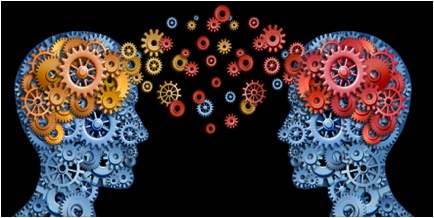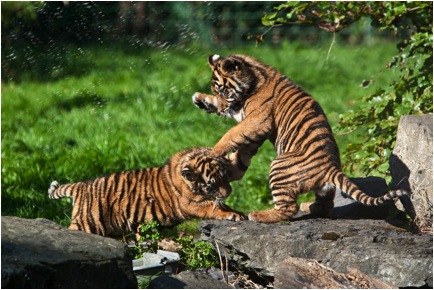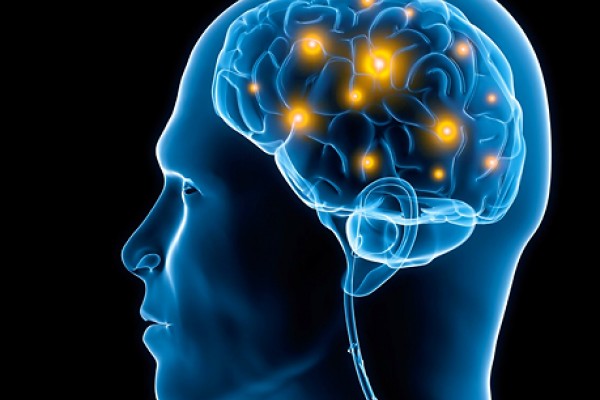Editor’s note: This is the first installment of a three-part series on storytelling, empathy, and advocacy.
Written by Perry Firth, project coordinator, Seattle University’s Project on Family Homelessness and school psychology graduate student
I was mesmerized by Jack London’s Alaska: beautiful, severe, raw.
A skinny second grader belly down on the carpet of my bedroom floor, I was reading long after my parents had turned off my light.
But I had no choice! London’s writing had transported me to another world, free of the mundane realities that plague children, like a set bedtime and parents.
In this new world I empathized with London’s protagonist, a sled dog named Buck in Call of the Wild.
What is so powerful about this memory in hindsight is not that it marked the first time I fell in love with independent reading, but that it is a collective experience. Absolute absorption in a compelling story is something that almost all people can relate to; it is universal.
This absorption in another’s world happens, to varying degrees of intensity, every time we hear, read (or watch) a good story.
So here’s what fascinates me: Why does this happen? What is so important—evolutionarily—about stories that they command our attention in a way few things can? And are there stories that impact us more than others? Why does this occur? And, to be addressed a little later in this series, what does the hardwired human preference for stories mean for social justice advocates?
Stories make great advocacy tools. In this three-part blog series, I’ll explore how stories serve important functions in our day-to-day life, a reality that social justice advocates can harness for awareness raising and motivating public action. From the role of stories in social communication, to our brain’s response to compelling narrative, this series will illuminate the “why” behind the human love of stories.
- Part One will focus on the brain’s response to stories, and why stories are so prevalent in all human societies from an evolutionary perspective.
- Part Two will take this foundation and connect it to empathy development and what this means for crafting effective advocacy stories, with an emphasis on homelessness.
- Finally, Part Three will discuss how to use stories to reach challenging audiences, with an analysis of how affluence and power impacts empathy. This, too, will be connected specifically to storytelling about homelessness.
So join me as I explore the important role stories play in human life.
Stories help us survive
Humans are storytellers, a truth whose roots emerge out of our deep need to connect to others.

In this way we are social mammals, depending on other people not only to survive, but to thrive. This explains a variety of human quirks, including our endless fascination with the lives of others, or gossip as it is more commonly called.
For instance, according to evolutionary psychologist Robin Dunbar, as reported in The Atlantic, stories about other people (ahem, gossip), make up about 65 percent of all conversation held in public places.
Thus our species has developed a host of mechanisms to facilitate social cohesion and communication. Stories fall under this category through their ability to connect us to other people, and highlight culturally and socially meaningful information.
Embedded within them is important information about values and belief systems between groups and individuals. This is important because fitting in with a group of other people has often meant the difference between life and death throughout human history. Stories are a survival mechanism because they bring people into the fold, and help keep them there.
Another way to say this is that they bond us together, evolution using them like glue to cement group cohesion. Stories define cultures in the same way they define the relationship between two people. Thus, while other primates must rely on physical grooming to bond the group, human social structures can benefit from stories and language.
Humans also respond to stories because they allow us to explore the benefits and consequences of different outcomes through the choices of their characters. In turn, this enhances our ability to plan and succeed in our own lives. This makes stories very engaging because they initiate our innate need to visualize and plan.

Not that I’m obsessed with Jack London, but the capacity of stories in this area was made abundantly clear to me when I read London’s To Build a Fire in high school (maybe you did too). London capitalizes on the human tendency toward planning and visualization in how he structures the piece, but also addresses the perils that come with their absence as he explains (spoiler alert) why his protagonist perishes in the Alaskan cold. He writes:
The trouble with him was that he was without imagination. He was quick and alert in the things of life, but only in the things, and not in the significance’s. Fifty degrees below zero meant eighty-odd degrees of frost. Such fact impressed him as being cold and uncomfortable, and that was all. It did not lead him to meditate upon his frailty as a creature of temperature, and upon man’s frailty in general, able only to live within certain narrow limits of heat and cold; and from there on it did not lead him to the conjectural field of immortality and man’s place in the universe…
Stories create empathy

Other researchers have pointed out how stories facilitate the development of “theory of mind” and empathy. “Theory of mind” is a term for how humans intuit/understand the mental states of others. It is part of the ability to “walk in another person’s shoes,” and also informs the thoughts and choices we make in our own lives.
Theory of mind enables us to navigate social nuances by helping us understand what another person is thinking or feeling. In short, theory of mind is essential to our ability to move within social landscapes, and stories help develop it by strengthening the cognitive skills involved in social interactions.
Essentially, through rich character-driven plots, we are able to watch/read/hear characters engage with others in social relationships that mimic those we see in the real world.
I’ll talk more about empathy, and the intriguing research about its role in storytelling, in Part Two.

Others have observed that stories are a form of play for children that develop important skills. All highly intelligent mammals engage in play as a way to develop the skills necessary to navigate the real world. (Think about tiger cubs play-hunting and little kids playing house with assigned roles.)
The role of stories as a way to facilitate social skills essential to real life is supported by this research. For instance, experiments have found children display a strong attraction to stories about people, preferring these stories to those that concern objects. This bolsters the idea that our deep attraction to stories is related to our fascination with understanding the minds and motivations of others.
Stories transport us

Clearly, stories are powerful. This is something I experienced for the first time in second grade but that I have felt many times since then.
What was going on in my brain that night I read my way into Jack London’s Alaska? For that matter, what is going on in our brains every time we hear, read, or watch a story that transports us to another world?
According to cognitive scientists, reading fiction is powerful because humans enact in our own minds the actions we read. That is, our brains live “vicariously through characters at the neurobiological level.” This seems obvious, yet when we analyze it, it yields interesting insights.

When we read a story, and come to a section in which a character performs some sort of physical action, our own motor cortex (the region of the brain responsible for physical movement) becomes activated as if we ourselves were performing the action.
So, part of how stories deeply engage us is through our own brain activating as if we ourselves were performing the actions of the characters we are reading about.
In particular, stories or written language that use rich descriptive words (e.g., that show not tell) will also activate sensory neurons. So yes, the old saying “show, don’t tell” is true on a neurobiological level.
Highlighting this, an opinion piece in The New York Times reports that researchers have scanned the brain using MRIs and found that the olfactory region of the brain, which processes scents, lights up when it reads about words associated with smells, like “perfume,” and “coffee.”
Similarly, one reason metaphors are so common and effective is because of how they activate the brain. Reading a metaphor involving texture activates the part of the brain involved in recognizing texture through touch. Specifically, Annie Paul writes in that opinion piece in The New York Times, “Metaphors like ‘the singer had a velvet voice’ and ‘He had leathery hands’ roused the sensory cortex, while phrases matched for meaning, like ‘The singer had a pleasing voice’ and ‘He had strong hands’ did not.”

This means that even though we are not the ones, for example, throwing a punch (or touching leathery hands), our brains light up as if we were. Which means that when we read or hear a story, on a certain level we live the experience of the characters.
Relatedly, Uri Hasson, a cognitive neuroscientist with Princeton has found that speakers sharing stories and listeners hearing them have very similar brain activity.
All of which can make us empathetic to those in life situations far outside the scope of our own experience.
In Part Two, coming next week, I’ll talk about how stories help develop empathy, and how they can be used to advocate effectively.

Pingback: Wired for Empathy: Why We Can’t Resist Good Narrative | Seattle University Project on Family Homelessness()
Pingback: Wired for Empathy: Why We Can’t Resist Gr...()
Pingback: Wired for Empathy: Why We Can’t Resist Gr...()